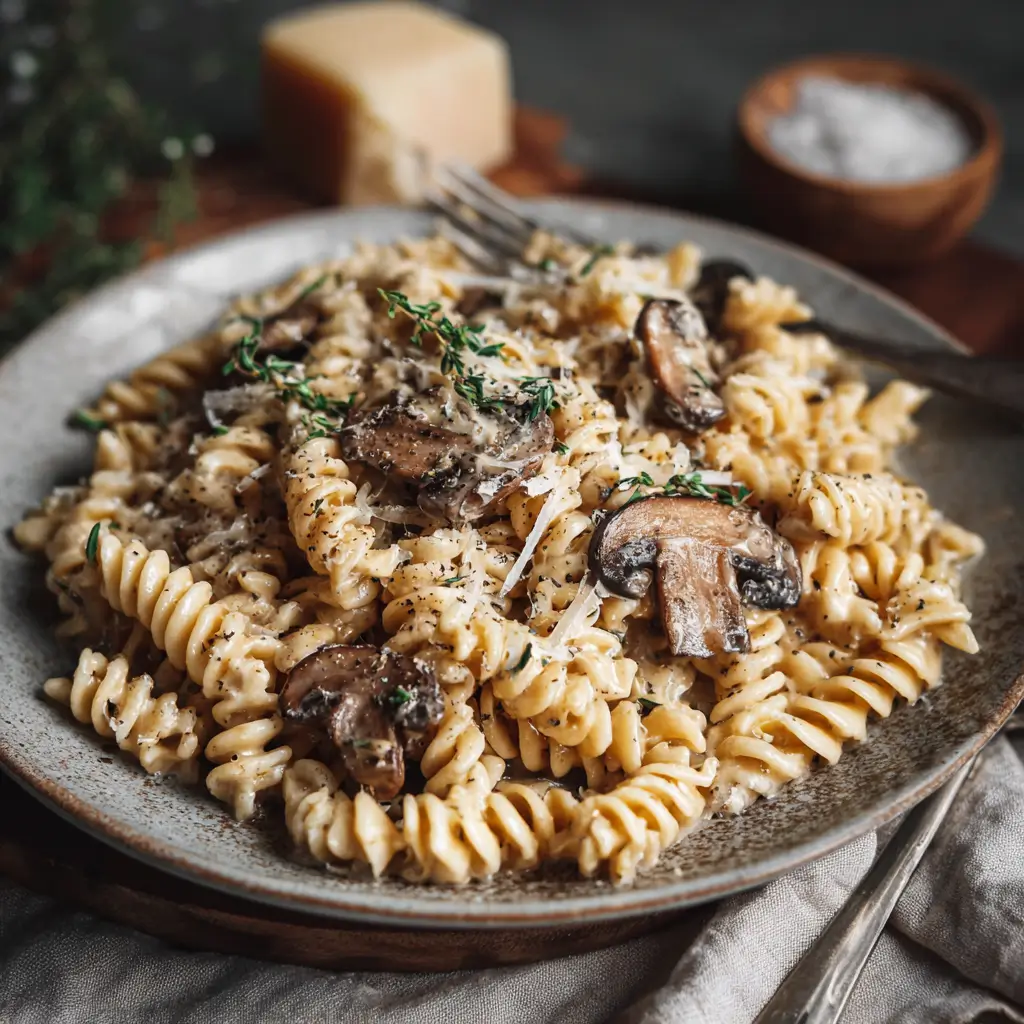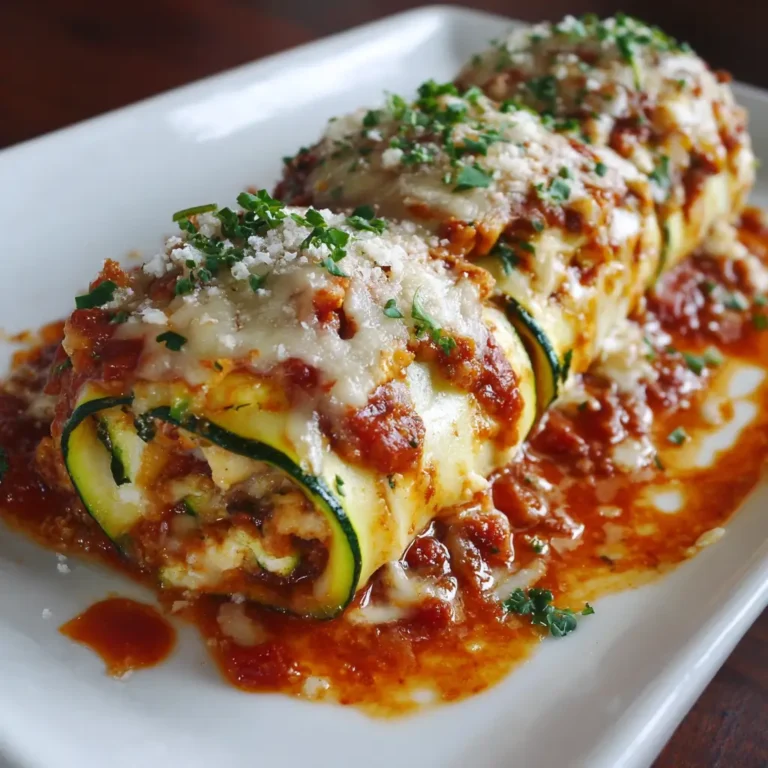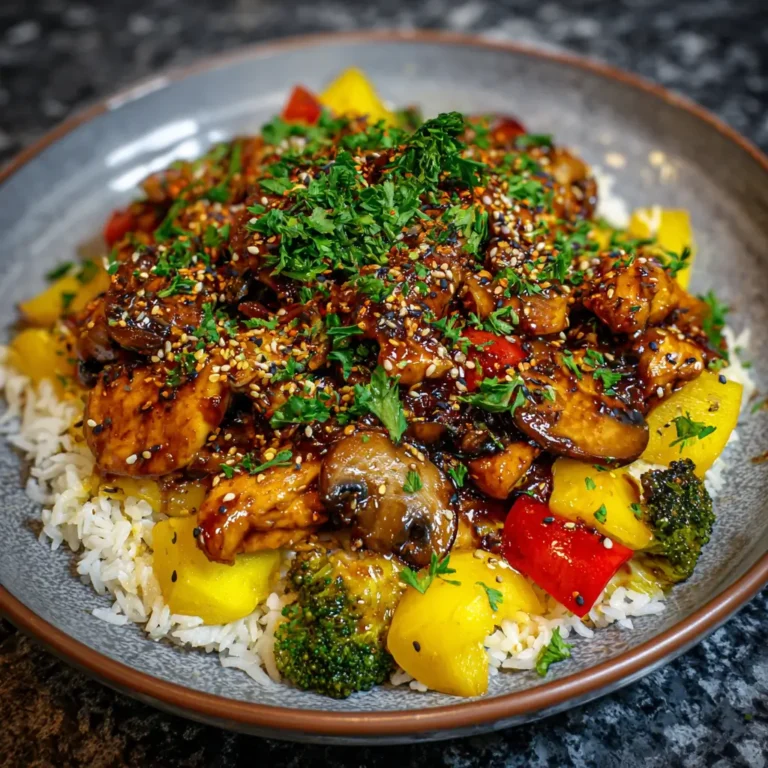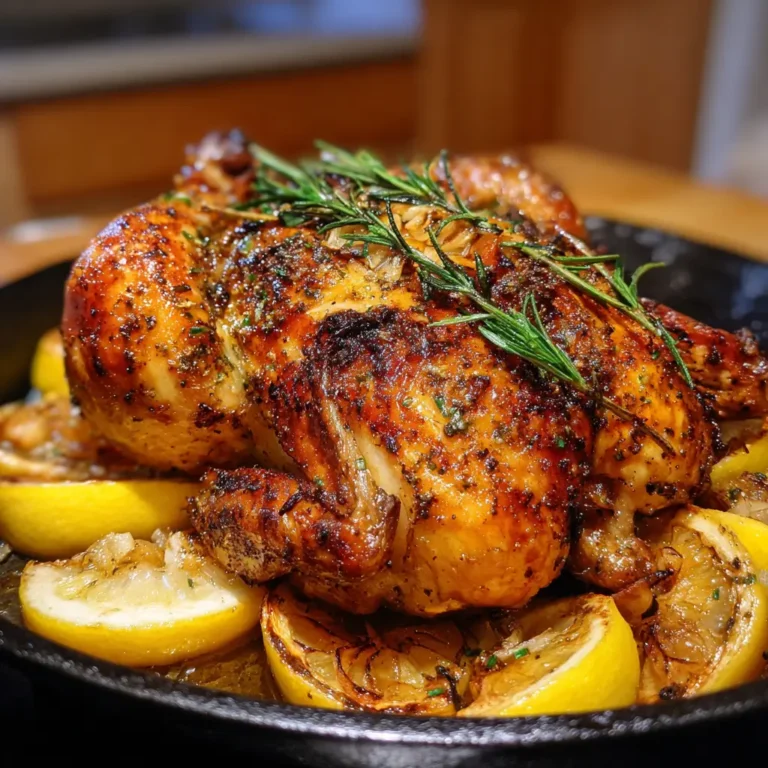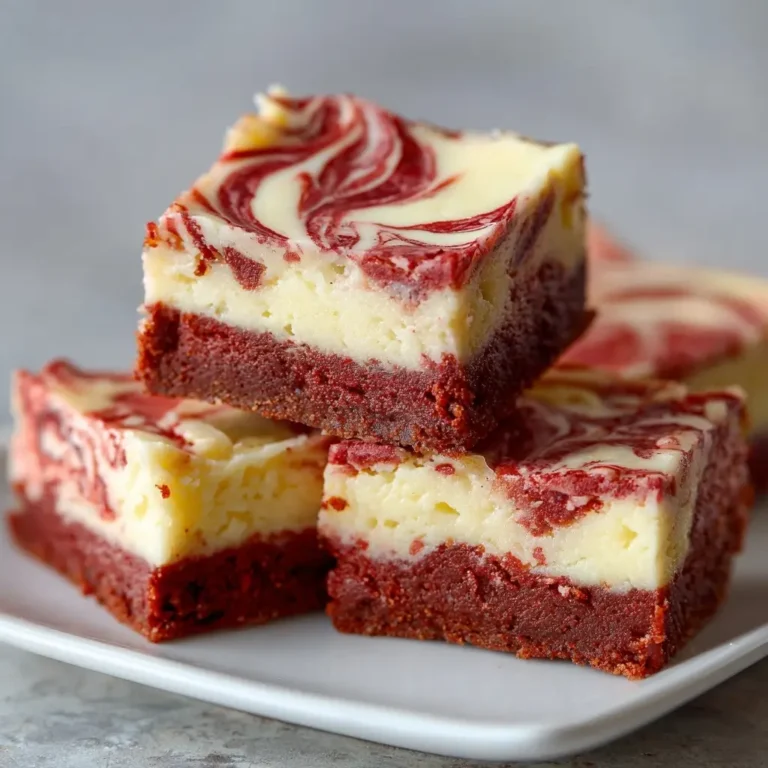Creamy Mushroom Pasta
Creamy Mushroom Pasta: A Luxurious Comfort Dish
Creamy mushroom pasta is a beloved dish that brings together earthy flavors and rich textures in a harmonious blend. Whether you’re cooking for yourself after a long day or hosting an intimate dinner, this dish offers elegance with minimal effort. Its velvety sauce coats tender pasta strands, while the sautéed mushrooms provide a deep umami punch that satisfies even the most discerning palates. Simple enough for weeknights yet sophisticated enough for special occasions, creamy mushroom pasta has earned its place in kitchens around the world.
The History of Creamy Mushroom Pasta
While pasta dishes have roots stretching back to ancient civilizations, creamy mushroom pasta as we know it today emerged from the fusion of Italian culinary traditions and European cream-based sauces. Italy has long celebrated the use of fresh ingredients like herbs, olive oil, and seasonal produce, but the addition of cream to pasta sauces became more prominent during the 18th and 19th centuries, particularly in Northern Italy and France.
Mushrooms have been a staple in European cuisine for centuries, prized not only for their flavor but also for their availability in forested regions. In French cuisine, “à la crème” preparations were common in haute cuisine, influencing neighboring countries. Over time, home cooks began combining readily available mushrooms—such as cremini, button, and porcini—with butter, garlic, cream, and Parmesan to create luscious sauces over fettuccine or tagliatelle.
In the mid-20th century, American interpretations of Italian food popularized creamy pasta dishes through cookbooks and television chefs. The rise of Alfredo-style sauces paved the way for variations like creamy mushroom pasta. Today, this dish reflects a global palate—honoring tradition while embracing modern twists like plant-based creams, gluten-free pastas, and bold herb infusions.
Ingredients Breakdown: What Makes This Dish Shine
The magic of creamy mushroom pasta lies in the synergy of high-quality ingredients working together to elevate simple components into something extraordinary. Here’s a detailed look at each ingredient and its role:
- Pasta (fettuccine, tagliatelle, or pappardelle): These flat, ribbon-like noodles hold creamy sauces exceptionally well. Their surface area allows the sauce to cling evenly, ensuring every bite is flavorful. You can also use penne or farfalle for a different texture.
- Fresh mushrooms (cremini, shiitake, portobello, or wild mix): Mushrooms are the star. Cremini offer a balanced earthiness, while shiitakes add a meaty depth. Wild mushrooms like chanterelles or morels bring a luxurious complexity if available.
- Heavy cream or half-and-half: Provides the silky base of the sauce. Heavy cream yields a richer texture, while half-and-half lightens it slightly without sacrificing creaminess.
- Butter and olive oil: Butter adds richness and helps sauté mushrooms beautifully; olive oil prevents burning and contributes a fruity note.
- Garlic and shallots: These aromatics build the flavor foundation. Shallots add sweetness, while garlic brings warmth and pungency when cooked just right.
- Dry white wine (optional): Deglazes the pan and lifts browned bits, adding acidity and brightness that cuts through the richness.
- Grated Parmesan cheese: Salty, nutty, and umami-rich, Parmesan thickens the sauce and enhances overall savoriness.
- Fresh herbs (parsley, thyme, or chives): Add freshness and color. Thyme pairs especially well with mushrooms, while parsley brightens the final dish.
- Salt and black pepper: Essential seasonings that enhance all other flavors. Freshly cracked pepper adds a subtle heat.
- Nutmeg (a pinch): Often used in creamy sauces, nutmeg subtly amplifies warmth and complements dairy notes.
Optional additions include lemon zest for brightness, truffle oil for luxury, spinach or kale for greens, or pancetta for a savory twist.
Step-by-Step Recipe: How to Make Perfect Creamy Mushroom Pasta
- Prepare Your Ingredients: Slice mushrooms uniformly (about ¼ inch thick) so they cook evenly. Mince garlic and shallot finely. Grate Parmesan and set aside. Measure out cream, wine, and herbs. Have everything ready before heating your pan—this recipe moves quickly!
- Cook the Pasta: Bring a large pot of salted water to a boil (use about 1 tablespoon of salt per quart). Add pasta and cook according to package instructions until al dente—usually 8–11 minutes depending on type. Reserve ½ to 1 cup of starchy pasta water before draining. Do not rinse the pasta; the starch helps bind the sauce.
- Sauté the Mushrooms: Heat a large skillet over medium-high heat. Add a combination of olive oil and butter (about 1 tbsp each). Once shimmering, add mushrooms in a single layer—don’t overcrowd, or they’ll steam instead of sear. Cook undisturbed for 2–3 minutes until golden brown on one side, then stir and continue cooking until deeply caramelized and tender (6–8 minutes total). Remove mushrooms and set aside.
- Build the Sauce Base: In the same skillet, reduce heat to medium. Add a bit more butter if needed, then sauté shallots for 2 minutes until translucent. Add garlic and cook for 30 seconds until fragrant—do not let it burn. If using wine, pour in ½ cup and simmer for 2–3 minutes until reduced by half, scraping up any browned bits (fond), which adds incredible flavor.
- Add Cream and Simmer: Pour in 1 to 1½ cups of heavy cream (depending on how saucy you want it). Stir gently and bring to a gentle simmer. Let it reduce slightly for 3–4 minutes, stirring occasionally. Season with salt, pepper, and a pinch of nutmeg.
- Incorporate Cheese and Mushrooms: Reduce heat to low. Stir in grated Parmesan gradually, allowing it to melt smoothly into the sauce. Return the sautéed mushrooms to the pan and stir to combine. Taste and adjust seasoning—add more salt, pepper, or a splash of lemon juice if needed.
- Combine with Pasta: Add drained pasta directly to the skillet. Toss thoroughly with tongs to coat every strand. If the sauce is too thick, loosen it with reserved pasta water, a few tablespoons at a time, until desired consistency is reached. The sauce should be glossy and cling to the pasta.
- Finish with Freshness: Remove from heat. Stir in chopped fresh parsley or thyme. For extra richness, swirl in a teaspoon of butter or a drizzle of olive oil.
- Serve Immediately: Plate the pasta hot, garnish with extra Parmesan, a crack of black pepper, and optional fresh herbs. Serve with a crisp green salad and crusty bread for a complete meal.
Tips for Success: Mastering the Art of Creamy Mushroom Pasta
- Don’t rush the mushrooms: Proper browning is key. Crowding the pan causes moisture buildup and steaming. Cook in batches if necessary for maximum caramelization.
- Use starchy pasta water: It’s the secret to a cohesive, restaurant-quality sauce. The starch acts as an emulsifier, helping the creamy sauce adhere to the pasta.
- Avoid boiling the cream: After adding cream, keep the heat moderate. Boiling can cause separation or curdling, especially with lower-fat alternatives.
- Season in layers: Salt each component—mushrooms, sauce, pasta—as you go. This builds depth rather than dumping all seasoning at once.
- Choose quality cheese: Freshly grated Parmigiano-Reggiano melts better and tastes superior to pre-grated versions, which often contain anti-caking agents.
- Balance richness: If the dish feels too heavy, a squeeze of lemon juice or a sprinkle of lemon zest at the end brightens the entire plate.
- Keep pasta moving: When combining sauce and pasta, toss continuously off the heat to prevent sticking and ensure even coating.
- Make it ahead? Think twice: Cream-based sauces don’t reheat perfectly due to potential separation. However, you can prep components separately and assemble quickly when ready to serve.
Variations and Customizations: Make It Your Own
Creamy mushroom pasta is incredibly versatile. Here are creative ways to customize it based on dietary needs, preferences, or what’s in your pantry:
- Plant-Based/Vegan Version: Use coconut cream or cashew cream instead of dairy. Opt for nutritional yeast or vegan Parmesan for cheesy flavor. Sauté mushrooms in olive oil and finish with lemon juice and fresh herbs.
- Gluten-Free Option: Substitute regular pasta with high-quality gluten-free pasta made from rice, corn, or legumes. Cook carefully to avoid mushiness and reserve starchy water from GF pasta—it still works!
- Protein Boost: Add grilled chicken, shrimp, smoked tofu, or seared scallops. For a vegetarian protein punch, stir in white beans or lentils.
- Bacon or Pancetta Twist: Render diced pancetta or bacon before sautéing mushrooms. The rendered fat adds smoky depth—just skip added butter if using.
- Truffle Indulgence: Drizzle with truffle oil before serving or shave fresh black truffle on top for a gourmet touch.
- Herb Variations: Swap parsley for tarragon (which pairs beautifully with mushrooms) or rosemary for a woodsy note. Basil adds a summery flair.
- Spinach or Greens Addition: Stir in a couple of handfuls of baby spinach, arugula, or kale during the last minute of cooking. They wilt quickly and add color and nutrients.
- Different Mushrooms: Experiment with oyster, enoki, maitake, or dried porcini (soaked first). Each brings unique texture and taste.
- Lemon-Garlic Variation: Add lemon zest and juice to the sauce for a brighter, fresher profile. Pairs well with seafood additions.
- Spicy Kick: Add red pepper flakes while sautéing garlic for a hint of heat.
Health Considerations and Nutritional Value
Creamy mushroom pasta is undeniably rich, but with mindful adjustments, it can fit into a balanced diet. Let’s break down the nutritional aspects:
- Mushrooms: Low in calories and fat, mushrooms are packed with B vitamins (especially riboflavin and niacin), selenium, potassium, and antioxidants. They also contain beta-glucans, which may support immune health.
- Pasta: A source of carbohydrates for energy. Whole grain or legume-based pastas increase fiber and protein content, aiding satiety and blood sugar control.
- Cream and Cheese: High in saturated fat and calories. While they contribute deliciousness, moderation is key. Consider using part-skim ricotta blended with milk, evaporated milk, or Greek yogurt as lighter substitutes.
- Olive Oil: Provides heart-healthy monounsaturated fats and anti-inflammatory compounds.
- Garlic and Herbs: Add flavor without calories and offer antioxidant and antimicrobial benefits.
Approximate Nutritional Values (per serving, serves 4):
| Nutrient | Amount |
|---|---|
| Calories | 550–700 kcal |
| Total Fat | 28–38 g |
| Saturated Fat | 14–18 g |
| Cholesterol | 70–90 mg |
| Carbohydrates | 55–65 g |
| Dietary Fiber | 3–5 g |
| Protein | 15–20 g |
| Sodium | 600–900 mg (varies with cheese and seasoning) |
Note: Values depend on specific ingredients and portion sizes. Using whole wheat pasta, less cheese, or plant-based cream reduces calories and fat significantly.
Dietary Tips:
- For lower calorie: Replace half the cream with low-sodium vegetable broth thickened with a cornstarch slurry.
- For heart health: Focus on olive oil, limit cheese, and include leafy greens.
- For gut health: Fermented toppings like kimchi or pickled onions can add probiotics and contrast richness.
Ingredients
- 12 oz (340 g) fettuccine or preferred pasta
- 1.5 lbs (680 g) mixed mushrooms (cremini, shiitake, etc.), sliced
- 3 tbsp unsalted butter, divided
- 2 tbsp olive oil
- 1 medium shallot, finely chopped
- 3 cloves garlic, minced
- ½ cup dry white wine (e.g., Sauvignon Blanc or Pinot Grigio) – optional
- 1 ½ cups heavy cream (or substitute)
- ½ cup grated Parmesan cheese, plus more for serving
- Salt and freshly ground black pepper, to taste
- ¼ tsp ground nutmeg (optional)
- ¼ cup fresh parsley, chopped
- 1 tsp fresh thyme leaves (or ½ tsp dried)
- Reserved pasta water, as needed
Directions
- Bring a large pot of salted water to a boil. Cook pasta according to package directions until al dente. Reserve 1 cup of pasta water, then drain and set aside.
- In a large skillet over medium-high heat, warm 1 tablespoon butter and 1 tablespoon olive oil. Add mushrooms in a single layer and cook without stirring for 2–3 minutes until golden. Stir and continue cooking until browned and tender. Transfer to a plate.
- In the same skillet, reduce heat to medium. Add remaining butter and olive oil. Sauté shallot for 2 minutes until soft. Add garlic and cook 30 seconds until fragrant.
- If using wine, pour it in and simmer 2–3 minutes until reduced by half, scraping up browned bits.
- Stir in heavy cream and bring to a gentle simmer. Cook 3–4 minutes to slightly thicken. Season with salt, pepper, and nutmeg.
- Reduce heat to low. Gradually stir in Parmesan until melted and smooth. Return mushrooms to the skillet and stir to combine.
- Add cooked pasta and toss well. Add reserved pasta water 2–3 tablespoons at a time to reach a silky, cohesive sauce.
- Remove from heat. Stir in parsley and thyme. Adjust seasoning.
- Serve immediately in warm bowls, topped with extra Parmesan, black pepper, and herbs.
FAQ
Can I make creamy mushroom pasta ahead of time?
It’s best served fresh, but you can prepare components separately. Cook the mushrooms and sauce base (without pasta), refrigerate for up to 2 days, and reheat gently. Cook pasta fresh and combine just before serving.
Why did my sauce separate?
High heat, rapid boiling, or cold ingredients added too quickly can cause separation. To fix, remove from heat, whisk in a splash of warm cream or pasta water, and stir gently. Avoid boiling the sauce.
What pasta works best?
Flat, wide noodles like fettuccine, tagliatelle, or pappardelle hold sauce best. Tube pastas like rigatoni or penne also work well.
Can I freeze creamy mushroom pasta?
Not recommended. Cream-based sauces tend to separate and become grainy when frozen and reheated. Dairy-free versions with coconut milk may fare slightly better.
Are there low-carb options?
Yes! Try zucchini noodles (zoodles), spaghetti squash, or shirataki noodles. Sauté them briefly and toss with the sauce just before serving to avoid sogginess.
How do I make it gluten-free?
Use certified gluten-free pasta and ensure all other ingredients (like broth or wine) are GF. Follow the same cooking method, adjusting pasta cooking time as needed.
Can I use canned mushrooms?
Fresh is best for texture and flavor. Canned mushrooms are watery and lack depth. If necessary, drain and pat dry, then sauté well to improve texture.
What wine should I use?
Choose a dry, crisp white like Sauvignon Blanc, Pinot Grigio, or Chardonnay (unoaked). Avoid sweet wines—they clash with the savory profile.
Summary
Creamy mushroom pasta combines earthy sautéed mushrooms with a rich, velvety sauce and perfectly cooked pasta for a comforting yet elegant meal. Easy to customize and bursting with umami flavor, it’s a timeless dish that satisfies with every bite.
